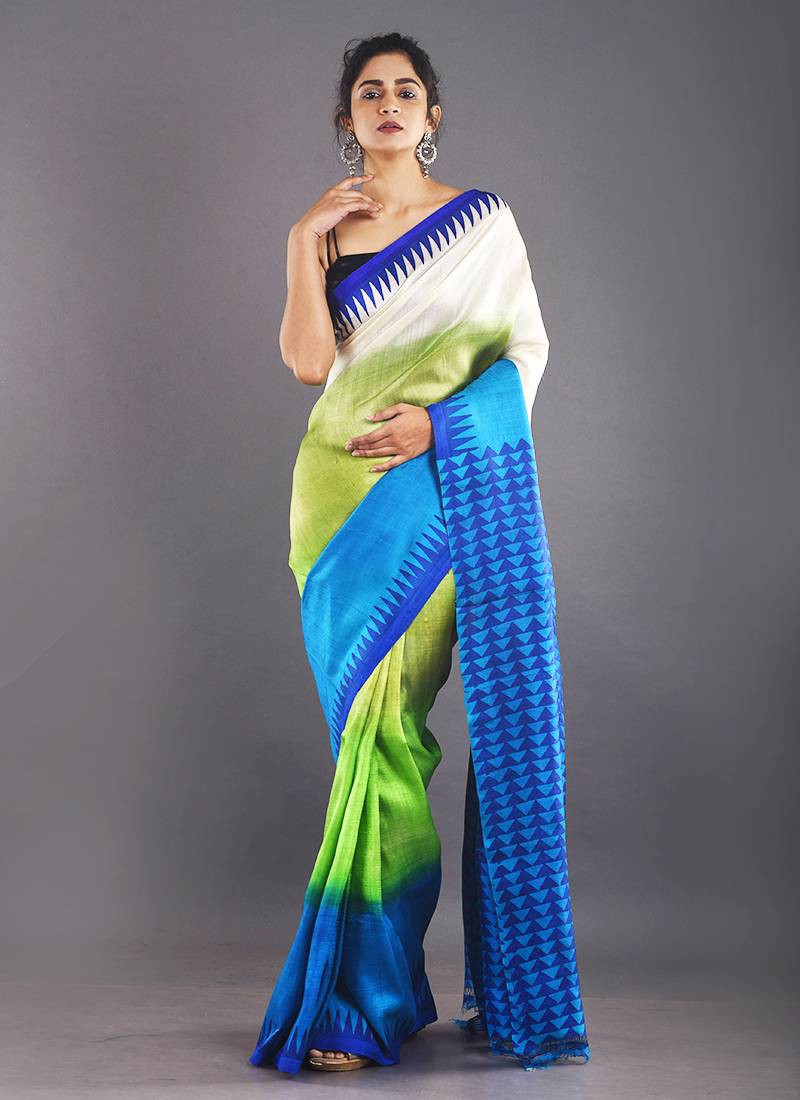Silk sarees have held an esteemed position in mothers’ and grandmothers’ wardrobes in India. Popular trends work on restyling these authentic and invaluable Banarasi silk saree garments opposing today’s fast-fashion culture.
Lehengas and cholis have not been successful in replacing the golden era of silk sarees. The hunt for genuine silk sarees is a top priority when weddings are around the corner. South Indian women take immense pride in their collection of silk sarees.
Every wardrobe is sure to host a bright Kanjeevaramsilk and a delicate Banarasi silk saree. Silk sarees are way more expensive than light-weight sarees. The maintenance of silk sarees is no joke either. Though their shelf life is long, a silk saree is worn three times in ten years on average. Naturally, a question arises- Why?
The why has been haunting husbands for decades. Movie portrayals continue to mock women who obsessively purchase sarees with utter disregard to the price or time spent in this exercise. A study of this attitude has become essential in understanding the cultural milieu of today’s fashion-conscious diva.
The First Road:
The history of the fabric begins around 2450 BC with the Indus Valley civilization. Commercial use of silk originated with the Silk Road connecting China to the West. Historians believe that it was the Chinese who developed the weaving style. Today, India is the second-largest exporter of silk after China. The rich texture of silk and the intrinsic brocades on it captured the Royal and the Elite.
During Akbar’s reign, silk garments were popular as the Emperor entertained skilled silk weavers from all over the country to produce the finest garments. Eventually, silk came to be associated with wealth and royalty. Until the pre-industrial era, silk was an integral part of international trade. The Rig Veda mentions the silk saree for the first time. Thus, the fabric attained a position of religious glory.
Temples continue to display statues of gods and goddesses in traditional silk sarees. The temple border is an elegant and popular design in silk sarees. Thus, religion, culture, the saree share an inseparable bond in Indian woman’s life.
The Saga Continues
The modern Indian woman is keen on styling the saree to express her individuality. Silks are versatile and woven through natural protein fabric. The garment is unstitched with no cut or stitches on it. Silk stands uncontested as the effect and patterns etched on a silk saree can never be reproduced on any other fabric. There are many variations in the fabric form, texture, and design of silk sarees.
Jammu and Kashmir, Karnataka, Tamil Nadu, and Andhra Pradesh produce 97% of silk garments. Various techniques and experiments in silk weaving have given rise to Chandheri, Tussar, Assam, Arni, Khadi, etc. However, traditional silk is still in demand and fashion. The major :
Banarasi Silk Saree:
The Banarasi silk is from Varanasi, Uttar Pradesh. An Indo-Mughal style can be found in the Banarasi silk style. Varanasi produces four silk variations, namely, Organza, pure silk, Georgette, and Shatirsarees.
Persian brocades and self-woven paisleys are common patterns in Banarasi silks. During the Royal eras, golden threads embellished the silk garments. Today, it has evolved as affordable garments for an average woman’s special day. The making of a Banarasi silk saree can take from fifteen days up to six months.
Kanjeevaram Silk Sarees:
Women from the South of India consider Kanjeevaramsarees a class apart. The silk originates from the Kanjeevaram region in Tamil Nadu. KanganaRanaut was spotted in the Cannes 2019 donning a Kanjeevaram silk saree. The fabric stands out because of its contrasting borders, temple patterns, flower or peacock motifs.
Kota Silk Sarees:
Unlike bulky traditional sarees, the Kota saree is light weighted and modest in its brilliance. Popularly known as ‘Kota-Masuria’, this fabric is also used in salwar, kameez, and lehengas. The Kota region in Rajasthan is the largest producer of Kota silk.
Mysore Silk Sarees:
The Mysore silk saree uses the highest quality mulberry silk. The Mysore silk originates from the city of Mysore in Karnataka. It has a longer shelf life with the garment preserving its mild bling.
Baluchari Silk Sarees:
Originating from Bengal, the Balucharisaree is known for its depiction of mythological scenes. Scenes from Mahabharata and Ramayana dominate the saree motifs. The lives of women during the Nawab rule were also a subject in these designs.
Pochampally Silk Sarees:
Originating from Andhra Pradesh, the Poochampally silk saree is known for its Ikat weave and patterns. The Poochampallysilk is a blend of cotton and silk threads forming geometric patterns and traditional motifs.

